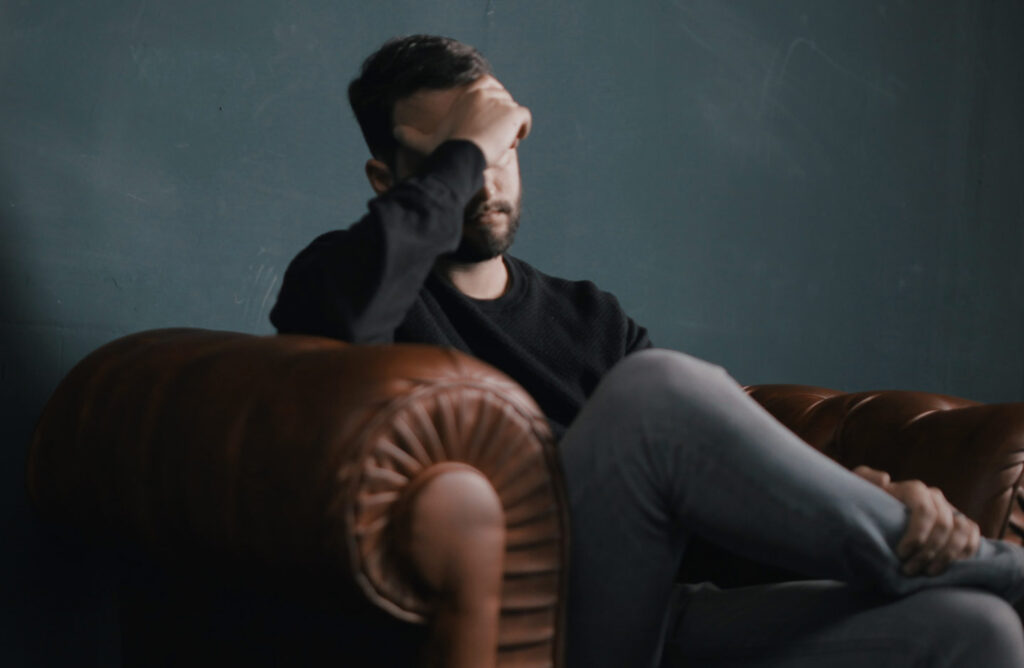The inability to maintain an erection, known as erectile dysfunction (ED), affects many men for a variety of reasons. Physical disorders such as heart disease, diabetes, obesity, and low testosterone are common causes. Psychological concerns, blood flow abnormalities, hormone imbalances, and nerve injury are all possible causes.
Table of contents:
- Anatomy of the penis
- What is an erection?
- What causes an erection?
- The 3 stages of erection
- The 3 types of erection
- What causes ejaculation?
- What is erectile dysfunction?
- How to stay hard longer
- Beneficial exercises for erectile dysfunction
You don’t have to treat ED with drugs like sildenafil (Viagra). There are exercises you can perform instead.
Pelvic exercises helped 40% of men with ED regain normal erection function, according to a study from the United Kingdom. They also assisted 33.5 percent of men in considerably improving their erectile function. Further study suggests that pelvic muscle training may be beneficial in the treatment of ED, ejaculation control and other pelvic health concerns.


What is the anatomy of the male genital organ?
The penis is made up of the following components:
- The corpora cavernosa, which is made up of two chambers that traverse the length of the organ and contain a tangle of blood veins structured like cavernous voids (like a sponge).
- The urethra, which runs along the underside of the corpora cavernosa and serves as a route for urine and sperm.
- Erectile tissue, which encircles the urethra and contains two major arteries, as well as multiple veins and nerves.
- The longest section of the penis, the shaft.
- The head (glans), which is located at the shaft’s end.
- The meatus, or orifice at the tip of the head, through which urine and sperm are expelled.


What Is an Erection, Exactly?
When the penis becomes engorged with blood and ready for sexual activity, it is called an erection.
A man’s penis is soft or flaccid when he is not sexually stimulated. His penis’ muscles are tight around the arteries, restricting blood flow to the sponge-like erectile tissue (called corpus cavernosa) that makes up the majority of the organ.
When a man is sexually stimulated, his brain sends messages through his nervous system to the muscles around his penis’ arteries, ordering them to relax, widen, and allow more blood to flow into the corpus cavernosa. More blood rushes into the penis, causing it to engorge and stiffen in preparation for sexual action.
Many various variables can cause a penis to not function as you’d like it to since sexual stimulation involves so many players—the brain, heart, blood, nerves, muscles, and more. Some men have physical issues that limit their sexual responses, while others acquire erectile dysfunction as a result of a mix of physical and psychological issues.


What causes an erection?
Blood rushes in through the cavernosus arteries to fill them when the corpora cavernosa’s blood vessels relax and open up. An erection is then caused by the blood becoming trapped under high pressure.
- The stimulation of the senses and the mind is the first step in achieving an erection. Nerve transmissions begin to stimulate the penis during sexual excitement. The corpora cavernosa’s muscles relax as a result of brain and local nerve impulses, allowing blood to flow in and fill the open areas. Blood pressure builds up in the corpora cavernosa, causing the penis to enlarge and an erection to form.
- The tunica albuginea (the membrane covering the corpora cavernosa) aids in retaining the erection by trapping blood in the corpora cavernosa. When the muscles in the penis contract, blood flow is stopped and outflow channels are opened, erection is reversed.


An erection has three stages
An erection can be divided into three stages and three types.
- The stimulus is the initial stage, which can be physical (yes, that includes touching) or psychological (the wandering mind, which is often a bit more inappropriate).
- Engorgement, on the other hand, is where your plumbing comes into play, and it essentially has to do with blood flow to the penis. The body produces nitrous oxide, which dilates blood vessels and increases blood flow, causing the penis to get firm.
- Finally, the penis returns to its usual size during the wind down – let’s call it the “flop stage” (non-medical terminology here).


There are three different types of erections
All three forms of erections produce the same result, although they do it in distinct ways.
- Physical contact is the most prevalent cause of erections.
- Next, there’s the psychogenic erection, which is generated by a visual (or acoustic) stimulation; it’s usually just basic imagining, but there’s no contact.
- Your nocturnal erection is the third and final form. This happens when you’re in a deep sleep period (also known as deep REM). Morning glory, despite being a source of humiliation for some, is generally a sign of a healthy (and happy) penis.


What causes ejaculation?
The impulses that are sent to the spinal cord and into the brain are generated by sexual stimulation and friction. Ejaculation is a reflex action that the central nervous system controls. When the sexual act reaches a critical level of arousal, it is triggered. It is divided into two parts.
- In the first phase, the vas deferens (the tubes that store and transport sperm from the testes) contracts, squeezing the sperm toward the base of the penis, while the prostate gland and seminal vesicles secrete secretions to form semen. The ejaculation is unstoppable at this point.
- During the second phase, the muscles at the base of the penis contract every 0.8 seconds, forcing the semen out in up to 5 spurts.


What is the definition of erectile dysfunction?
Erectile dysfunction (ED) is a condition in which men have difficulties obtaining and maintaining an erection. The issue could be ongoing or only occur on occasion. While ED is commonly referred to as “impotence,” healthcare practitioners are rapidly moving away from the term, which can be seen as derogatory or conflated with nonmedical connotations.
Erectile dysfunction (ED) is defined as the inability to obtain or sustain an erection.
It is more common in guys who have one or more of the following characteristics:
- Specific illnesses or conditions
- Obesity or a smoking history
- Emotional or psychological problems
Although it is more common in elderly people, it is not a natural result of ageing.
ED is aggravating in and of itself, but it can also lead to one or more of the following:
- Anxiety
- Depression
- An unsatisfactory sexual life
- A lack of self-confidence
- Difficulty in conceiving a child
ED can happen on its own, however it can also be caused by the following conditions:
- Kidney illness (chronic)
- Cardiovascular disease
- Multiple sclerosis (MS)
- Atherosclerosis
- Diabetes
- Hypertension (high blood pressure)
- Prostate cancer is an illness that affects men
- Injury to the penis or the organs around it
Emotional and psychological difficulties may also play a role in ED.


How to Stay Hard Longer
Several factors can boost your sexual responsiveness and ability to stay hard for longer periods of time.
- Make dietary changes: Developing healthy eating habits can improve your general health as well as your erections. Eat heart-healthy, flavonoid-rich foods like berries, cherries, soybeans, apples, and leafy green vegetables like spinach and kale to keep your circulatory system robust. While there is no specific diet for erectile dysfunction, some evidence suggests that eating a Mediterranean-style diet can help prevent the condition.
- Exercise on a regular basis: Do something you enjoy while remembering that you don’t have to go all out. According to one study, walking for half an hour every day can reduce the risk of ED by roughly 40%. Another technique to increase your sexual receptivity is to do kegel exercises, which strengthen the pelvic floor.
- Quit smoking and cut back on alcohol: Both might make it difficult to get and maintain an erection.
- Maintain a healthy weight: Research suggests that men who are overweight or obese may have better erectile performance if they reduce weight.
- Reduce stress: Anxiety and stress can cause ED. Worse, having troubles with sexual performance can lead to greater stress, creating a vicious cycle. Because stress is an unavoidable part of life, do whatever you can to handle it. Make an appointment with a competent mental health practitioner if you suspect you have a more serious or chronic mental illness or performance anxiety. They can assist you in dealing with your difficulties in a safe and effective manner.
- Make sleep a priority: Sleep issues including sleep apnea and sleeplessness are fairly common among men with ED. Set up a bedtime ritual to help you unwind at night, and make your room cold, dark, and relaxing.
- Work with your partner: If you’re in a relationship, openly discussing sexual and emotional issues can improve intimacy, reduce anxiety, and relieve any pressure you may feel to perform.
Other therapies vs. exercise
Medication only gives transient relief, whereas treating the root of ED produces long-term outcomes. Furthermore, some people believe that medicine is ineffectual.
ED is sometimes caused by psychological causes. A person can benefit from talking therapy in these situations.


What kinds of exercises are beneficial?
Exercises that strengthen the pelvic floor muscles can help persons with ED.
The pelvic floor muscles play an important role in maintaining blood flow to the penis and erections.
The muscles accomplish this by exerting pressure on the penile veins. An erection is possible because the pressure stops blood from exiting the region.
Try some Kegel exercises
Kegels, or pelvic floor exercises, are the most useful for ED.
The muscles at the bottom of the pelvis, particularly the pubococcygeus, are targeted in these workouts. This supports the pelvic organs by looping from the pubic bone to the tailbone.
When this muscle becomes weak, it loses its ability to keep blood from leaking out of the erect penis.
The pubococcygeus will be strengthened and toned by performing pelvic floor workouts. A person may not notice a difference in erections for 4–6 weeks.
- Activating the muscles of the pelvic floor
This is a simple yet crucial activity. It instructs people on how to use their pelvic floor muscles.
- Lie down on your back with your knees bent, feet flat on the floor, and arms by your sides.
- Take a deep breath out and squeeze the pelvic floor muscles for three counts.
- Take a three-count inhale and exhale.
- Take your time finding the correct muscle group – the ones at the bottom of the pelvis. Other muscles, particularly those of the stomach, buttocks, and legs, can be easily contracted by accident.
- Pelvic floor activation while sitting
- Take a seat with your arms at your sides and your feet flat on the floor, hip-width apart.
- Activate the pelvic floor muscles for a count of three, then relax for a count of three, using the same approach as before.
- Make sure the muscles in your stomach, buttocks, and legs aren’t contracting.
- Standing pelvic floor activation
- Stand with your arms by your sides and your feet hip-width apart.
- Activate the pelvic floor muscles for three counts, then relax for three counts, using the technique described above.
- Make sure the muscles in your stomach, buttocks, and legs aren’t contracting.
Once a person has gotten used to doing Kegel exercises three times a day, adding activities that require greater movement can help.


Exercises to try in Pilates
These Pilates exercises target the right muscles and put a person’s pelvic floor strength to the test while moving.
- Knee fallouts
This is a simple beginner’s workout with minimal motions.
- Lie down on your back with your knees bent, feet flat on the floor, and arms by your sides.
- Maintain a neutral spine with a tiny gap between the centre of your back and the ground.
- Exhale and carefully lower one leg to the floor, squeezing the pelvic floor muscles. Only lower it as far as you can while preserving pelvic floor muscular activity. Maintain pelvic stability.
- Take a deep breath, relax your muscles, and bend your knee again.
- Switch sides and repeat.
- Begin with four or five reps on each side and work your way up to ten.
- Supine foot raises
- Lie down on your back with your knees bent, feet flat on the floor, and arms by your sides.
- Exhale and slowly elevate one foot off the floor, engaging the pelvic floor muscles. Maintain a stable pelvis and spine.
- Exhale and return your foot to the ground.
- Switch sides every now and then.
- Pelvic curl
- Lie down on your back with your knees bent, feet flat on the floor, and arms by your sides.
- Maintain a neutral spine with a tiny gap between the centre of your back and the ground.
- Take a deep breath out and contract the pelvic floor muscles.
- With the back flat against the floor, tilt the pelvis upward toward the belly button.
- Raise the buttocks slowly and press the heels onto the floor.
- Squeeze the buttocks, as well as the lower and middle back, while lifting them.
- The weight of the body should be supported by the shoulders.
- Squeeze the buttocks and pelvic floor muscles for three breaths.
- Slowly lower the buttocks and back to the floor, vertebra by vertebra.
- Start with three to four repetitions and work your way up.
Things to keep in mind when working out
A person may only be able to repeat an activity three or four times at first.
Practicing the workouts on a daily basis can help you gain strength. Work up to 10 repetitions of each exercise per day over time.
If a person does not continue to complete the exercises, the muscles may weaken, and ED may reappear.
